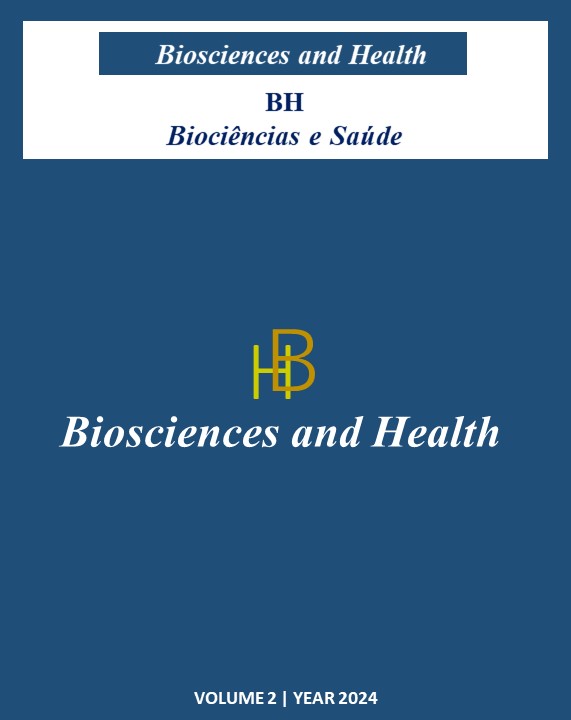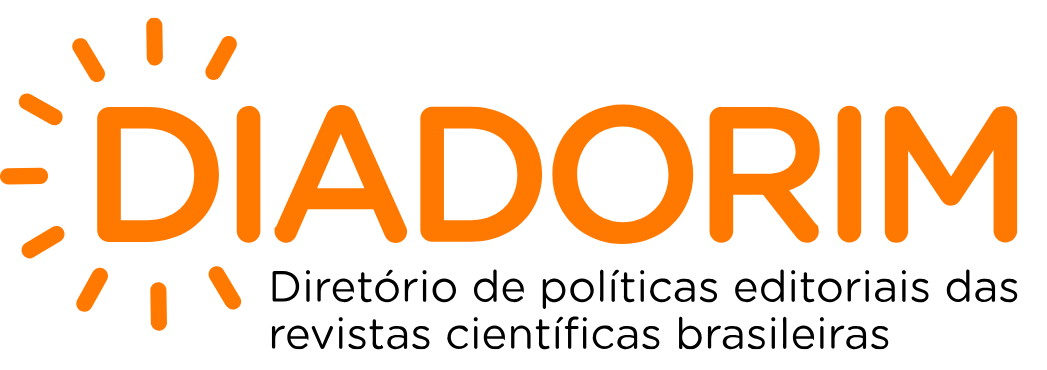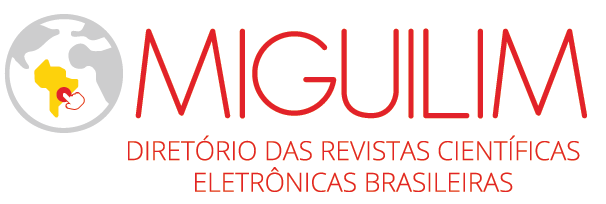Neuromotor intervention in physiotherapy treatment in motor development of children with autistic spectrum disorder
DOI:
https://doi.org/10.62331/2965-758X.v2.2024.43Keywords:
Autism, Motor physiotherapy, Autism spectrum disorder, Motor developmentAbstract
Autism spectrum disorder (ASD) is a neurodevelopmental disorder that causes impairments in social-communicative and behavioral areas. Individuals show changes in movements and gestures with few adaptations, which impairs motor growth, balance and laterality, basic functions for autonomy and cognitive learning. This research aims to describe the importance of motor physiotherapy for the development of children diagnosed with ASD. For this integrative review, the Bireme and PubMed databases were used to investigate studies published 2018-2021. The data was collected from February 15 to September 26, 2022. The final sample of this review consisted of four online journals and one course conclusion paper, which were selected using the inclusion and exclusion criteria. In the end, only five papers were chosen to compile the results. In these studies, it was observed that physiotherapy is of paramount importance in the follow-up of children with ASD to lead to a better quality of life and interaction within the family and society, which positively benefits the motor progress of children with ASD. Thus, it can be concluded that motor physiotherapy is effective and important for the treatment of children with ASD, since it promotes improvements in their overall development. Therefore, more research and studies are needed to provide scientific support to professionals and academics in the field.
References
Ferreira JTC, Mira NF, Carbonero FC, Campos D. Effects of physical therapy in autistic children: case series study. Cad Pós-Grad Distúrb Desenvolv. 2016; 16(2):24-32. https://doi.org/10.5935/1809-4139.20160004
Segura DCA, Nascimento FC, Klein D. Estudo do conhecimento clínico dos profissionais da fisioterapia no tratamento de crianças autistas. Arq Ciênc Saúde UNIPAR. 2021; 15(2):159-165. Disponível em: https://revistas.unipar.br/index.php/saude/article/view/3711
American Psychiatric Association, DSM-5 Task Force. Diagnostic and statistical manual of mental disorders: DSM-5™ (5th ed.). American Psychiatric Publishing, 2013. https://doi.org/10.1176/appi.books.9780890425596
Sousa PML, Santos MSC. Caracterização da síndrome autista. Psicologia.pt. Portal dos Psicólogos. 2018; 1-24. Disponível em: https://www.psicologia.pt/artigos/textos/A0259.pdf
Almeda CM, Albuquerque K. Autismo: importância da detecção e intervenção precoces. Revista Científica Multidisciplinar Núcleo do Conhecimento. 2017; 1:488-502. Disponível em: https://www.nucleodoconhecimento.com.br/educacao/autismo
Klin A. Autismo e síndrome de Asperger: uma visão geral. Braz J Psychiatry. 2006; 28:s3-11. https://doi.org/10.1590/S1516-44462006000500002
Rutter M. Incidence of autism spectrum disorders: changes over time and their meaning. Acta Paediatr. 2005; 94:2-15. https://doi.org/10.1111/j.1651-2227.2005.tb01779.x
Araujo ÁC, Lotufo Neto F. The new north american classification of mental disorders: DSM-5. Rev Bras Ter Comport Cogn. 2014; 16:67-82. Disponível em: https://rbtcc.com.br/RBTCC/article/view/659
Liu T. Sensory processing and motor skill performance in elementary school children with autism spectrum disorder. Percept Mot Skills. 2013; 116:197-209. https://doi.org/10.2466/10.25.PMS.116.1.197-209
Lloyd M, MacDonald M, Lord C. Motor skills of toddlers with autism spectrum disorders. Autism. 2013; 17(2):133-146. https://doi.org/10.1177/1362361311402230
Müller RA, Kleinhans N, Kemmotsu N, Pierce K, Courchesne E. Abnormal variability and distribution of functional maps in autism: an FMRI study of visuomotor learning. Am J Psychiatry. 2003; 160(10):1847-1862. https://doi.org/10.1176/appi.ajp.160.10.1847
Gong L, Liu Y, Yi L, Fang J, Yang Y, Wei K. Abnormal gait patterns in autism spectrum disorder and their correlations with social impairments. Autism Res. 2020; 13(7):1215-1226. https://doi.org/10.1002/aur.2302
Cassidy S, Hannant P, Tavassoli T, Allison C, Smith P, Baron-Cohen S. Dyspraxia and autistic traits in adults with and without autism spectrum conditions. Mol Autism. 2016; 7:48. https://doi.org/10.1186/s13229-016-0112-x
Bojanek EK, Wang Z, White SP, Mosconi MW. Postural control processes during standing and step initiation in autism spectrum disorder. J Neurodev Disord. 2020; 12:1. https://doi.org/10.1186/s11689-019-9305-x
Gamez Corral AS, Manning R, Wang C, Cisneros A, Meeuwsen HJ, Boyle JB. A novel approach to enhancing upper extremity coordination in children with autism spectrum disorder. J Mot Behav. 2020; 52(3):311-317. https://doi.org/10.1080/00222895.2019.1618238
Paquet A, Olliac B, Golse B, Vaivre-Douret L. Evaluation of neuromuscular tone phenotypes in children with autism spectrum disorder: an exploratory study. Neurophysiol Clin. 2017; 47(4):261-268. https://doi.org/10.1016/j.neucli.2017.07.001
Hsiung EY, Chien SH, Chu YH, Ho MW. Adults with autism are less proficient in identifying biological motion actions portrayed with point-light displays. J Intellect Disabil Res. 2019; 63(9):1111-1124. https://doi.org/10.1111/jir.12623
Harvy J, Ewen JB, Thakor N, Bezerianos A, Li J. Cortical functional connectivity during praxis in autism spectrum disorder. Annu Int Conf IEEE Eng Med Biol Soc. 2019; 2019:333-336. https://doi.org/10.1109/EMBC.2019.8857903
Asif M, Vicente AM, Couto FM. FunVar: a systematic pipeline to unravel the convergence patterns of genetic variants in ASD, a paradigmatic complex disease. J Biomed Inform. 2019; 98:103273. https://doi.org/10.1016/j.jbi.2019.103273
FACHIN, O. Fundamentos de metodologia. São Paulo: Saraiva, 2006.
Consoline NA. Intervenção fisioterapêutica para a melhora da coordenação motora fina em pacientes com autismo. Ariquemes. Monografia (Graduação em Fisioterapia) - Faculdade de Educação e Meio Ambiente – FAEMA; 2018. Disponível em: https://repositorio.unifaema.edu.br/jspui/handle/123456789/2357
Fernandes CR, Souza WÁAA, Camargo APR. Influência da fisioterapia no acompanhamento de crianças portadoras do TEA (Transtorno do Espectro Autista). Revista das Ciências da Saúde e Ciências aplicadas do Oeste Baiano-Higia. 2020; 5:52-68. Disponível em: http://fasb.edu.br/revista/index.php/higia/article/view/529/0
Fonseca CA, Nascimento GS, Silva KCC, Maciel DMVL. Contribuição da fisioterapia no desenvolvimento psicomotor da criança com transtorno do espectro autista: uma revisão bibliográfica. Revista Novos Desafios. 2021; 1:31-43. Disponível em: https://novosdesafios.inf.br/index.php/revista/article/view/9
Santos GTS, Mascarenhas MS, Oliveira EC. A contribuição da fisioterapia no desenvolvimento motor de crianças com transtorno do espectro autista. Cadernos de Pós-Graduação em Distúrbios do Desenvolvimento. 2021; 21:129-143. https://doi.org/10.5935/cadernosdisturbios.v21n1p129-143
Vidal JPS, Pinheiro PCPM, Lima VA, Andrade SRS, Andrade LD, Silva KC, et al. Aplicabilidade de técnicas da fisioterapia no tratamento da perturbação postural da criança com transtorno do espectro autista. RRS-FESGO. 2021; 4:102-109. Disponível em: https://estacio.periodicoscientificos.com.br/index.php/rrsfesgo/article/view/154
Almeida ML, Neves AS. A popularização diagnóstica do autismo: uma falsa epidemia? Psicol Cienc Prof. 2020; 40:e180896. https://doi.org/10.1590/1982-3703003180896
Santos ACF. As contribuições da psicomotricidade na educação infantil. Guarabira. Trabalho de Conclusão de Curso (Graduação em Pedagogia) - Universidade Estadual da Paraíba; 2018. Disponível em: https://dspace.bc.uepb.edu.br/xmlui/handle/123456789/18468
Downloads
Published
How to Cite
Issue
Section
License
Copyright (c) 2024 Biosciences and Health

This work is licensed under a Creative Commons Attribution 4.0 International License.









